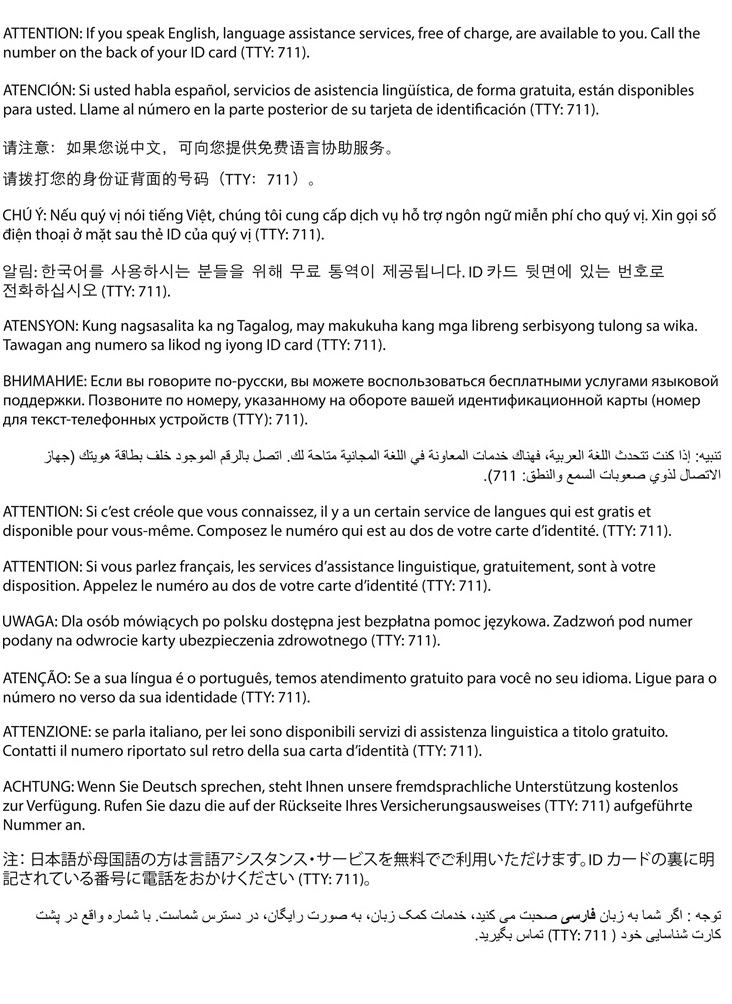| Highmark Commercial Medical Policy - Pennsylvania |
| Medical Policy: | S-179-018 |
| Topic: | Treatment of Abnormal Uterine Bleeding and Fibroids |
| Section: | Surgery |
| Effective Date: | May 14, 2018 |
| Issue Date: | May 14, 2018 |
| Last Reviewed: | April 2018 |
Uterine fibroids are one of the most common conditions affecting women in the reproductive years; symptoms include menorrhagia, pelvic pressure, or pain. Surgery, including hysterectomy and various myomectomy procedures, is considered the criterion standard treatment for symptom resolution. However, there is the potential for surgical complications and, in the case of hysterectomy, the uterus is not preserved. In addition, in the case of multiple uterine fibroids, myomectomy can be a time-consuming procedure. Treatment options include hysterectomy, myomectomy, uterine artery embolization and endometrial ablation. |
This policy is designed to address medical guidelines that are appropriate for the majority of individuals with a particular disease, illness, or condition. Each person's unique clinical circumstances may warrant individual consideration, based on review of applicable medical records.
| Policy Position Coverage is subject to the specific terms of the member’s benefit plan. |
Treatment of uterine fibroids is considered experimental/investigational and therefore non-covered for ANY ONE of the following procedures/services:
The published data regarding techniques of myolysis are inadequate to permit scientific conclusions due to the lack of randomized trials and therefore safety and effectiveness has not been established.
Transcatheter uterine artery embolization (UAE) of uterine arteries may be considered medically necessary for the treatment of uterine fibroids when ANY ONE of the following criteria is met:
Or
One repeat transcatheter embolization of uterine arteries may be considered medically necessary to treat persistent symptoms of uterine fibroids after an initial uterine artery embolization when ANY ONE of the following criteria is met:
UAE may be considered medically necessary for the treatment of postpartum uterine hemorrhage.
UAE is considered experimental/investigational for all other indications and therefore non-covered because the safety and/or effectiveness have not been established by the available published peer-reviewed literature.
Laparoscopic ultrasound-guided radiofrequency ablation (e.g., Acessa™) for the treatment of uterine fibroids may be considered medically necessary when the individual is experiencing ANY ONE of the following symptoms:
Laparoscopic ultrasound-guided radiofrequency ablation is considered experimental/investigational for all other indications not listed above and therefore non-covered because the safety and/or effectiveness have not been established by the available published peer-reviewed literature.
Endometrial ablation with or without hysteroscopic guidance, using an FDA-approved device, may be considered medically necessary in women with menorrhagia who are not candidates for, or who are unresponsive to, hormone therapy and would otherwise be considered candidates for hysterectomy.
Endometrial ablation with or without hysteroscopic guidance for all other indications is considered not medically necessary.
| Professional Statements and Societal Positions |
In November 2012, the Acessa™ System (Acessa Health, Austin, TX, formerly Halt Medical) was cleared for marketing by the U.S. Food and Drug Administration (FDA) through the 510(k) process for percutaneous laparoscopic coagulation and ablation of soft tissue and treatment of symptomatic uterine fibroids under laparoscopic ultrasound guidance. The technology was previously approved in 2010, at which time it was called the Halt 2000GI™ Electrosurgical Radiofrequency Ablation System. The intended use of the Halt 2000GI system was for percutaneous laparoscopic coagulation and ablation of soft tissue. Unlike FDA clearance of the Acessa System, the intended use statement for the Halt 2000GI system does not specifically mention the treatment of uterine fibroids. |
| Place of Service: Outpatient |
Experimental/Investigational (E/I) services are not covered regardless of place of service.
Treatment of Uterine Fibroids is typically an outpatient procedure which is only eligible for coverage as an inpatient procedure in special circumstances, including, but not limited to, the presence of a co-morbid condition that would require monitoring in a more controlled environment such as the inpatient setting.
| The policy position applies to all commercial lines of business |
| Denial Statements |
Services that do not meet the criteria of this policy will not be considered medically necessary. A network provider cannot bill the member for the denied service unless: (a) the provider has given advance written notice, informing the member that the service may be deemed not medically necessary; (b) the member is provided with an estimate of the cost; and (c) the member agrees in writing to assume financial responsibility in advance of receiving the service. The signed agreement must be maintained in the provider’s records.
Services that do not meet the criteria of this policy will be considered experimental/investigational (E/I). A network provider can bill the member for the experimental/investigational service. The provider must give advance written notice informing the member that the service has been deemed E/I. The member must be provided with an estimate of the cost and the member must agree in writing to assume financial responsibility in advance of receiving the service. The signed agreement must be maintained in the provider’s records.
| Outpatient HCPCS (C Codes) |
| C1782 |
| Links |
09/2015, Coverage Criteria Revised For Treatment Of Uterine Fibroids
05/2018, Guidelines Established For Laparoscopic Radiofrequency Ablation of Uterine Fibroids
